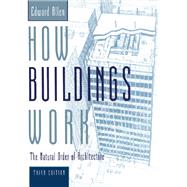
| The Outdoor Environment | p. 3 |
| The Human Environment | p. 14 |
| The Concept of Shelter | p. 22 |
| Building Function | p. 29 |
| Providing Water | p. 31 |
| Recycling Wastes | p. 37 |
| Providing for Thermal Comfort | p. 43 |
| Thermal Properties of Building Components | p. 47 |
| Controlling the Radiation of Heat | p. 64 |
| Controlling Air Temperature and Humidity | p. 73 |
| Controlling Air Movement | p. 89 |
| Keeping Water Out | p. 99 |
| Seeing and Illumination | p. 114 |
| Hearing and Being Heard | p. 124 |
| Providing Concentrated Energy | p. 133 |
| Fitting Buildings to People | p. 139 |
| Providing Structural Support | p. 153 |
| Providing for Building Movement | p. 184 |
| Controlling Fire | p. 193 |
| Getting a Building Built | p. 207 |
| Keeping a Building Alive and Growing | p. 217 |
| Building Components and Building Function | p. 231 |
| Glossary | p. 237 |
| Index | p. 243 |
| Table of Contents provided by Blackwell. All Rights Reserved. |
The New copy of this book will include any supplemental materials advertised. Please check the title of the book to determine if it should include any access cards, study guides, lab manuals, CDs, etc.
The Used, Rental and eBook copies of this book are not guaranteed to include any supplemental materials. Typically, only the book itself is included. This is true even if the title states it includes any access cards, study guides, lab manuals, CDs, etc.